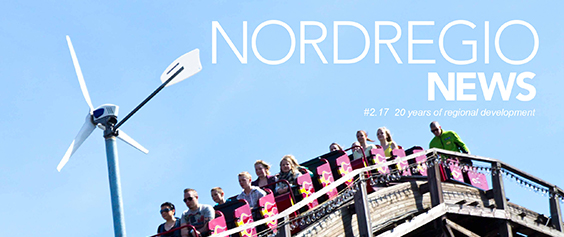Worldwide, cities are growing rapidly; half the global population now lives in cities and 66% is projected to live in urban areas by 2050 (UN, DESA, 2015). Between 2014 and 2050, a population growth of 2.5 billion urban dwellers is expected, with approximately 90% of it taking place in Asian and African cities (UN, DESA, 2015). While cities have proven to be powerful drivers of economic growth, they have also become sources of problems.
Seventy-five per cent of natural resources are consumed in cities, which also account for 80% of global greenhouse gas emissions (UN, 2011). In addition, crime, homelessness, youth unemployment, social unrest and segregation of vulnerable groups are challenges that generally occur in urban environments. Thus, rapid urban growth is accompanied by patterns that cannot be sustained into the future. One of the most significant challenges – from a global perspective – is to create sustainable environments for a rapidly expanding urban population. This means shifting our understanding of cities as mere consequences of growth, to thinking of them as opportunities for responding to and resolving environmental and social challenges.
Nordregio and Nordic Innovation oversee the task of investigating Nordic solutions to urban problems. While Nordregio is responsible for telling stories about sustainable initiatives in Nordic cities, Nordic Innovation will explore the potential for exporting Nordic solutions to other markets.
Cities in the Nordic region
Despite the problems and challenges within Nordic cities, they perform well in many aspects of urban sustainability. What positive examples can Nordic cities provide? One is Copenhagen, which has established ambitious targets for becoming carbon neutral in the near future (Copenhagen Climate Plan,2009). Another is Oslo, which will have a car-free city centre by 2019, as a strategy for slashing greenhouse gas emissions. In addition, new building codes, product requirements, and eco product labelling, as well as innovative tax and incentive schemes, have been created and implemented in the Nordic region. These efforts set high standards for energy efficiency and push technological developments, increasing social awareness and leading to alternative solutions to various urban challenges.
Efforts towards sustainable urban futures have also been mirrored in policies at different levels. Supporting a shared story about Nordic Sustainable City, the Nordic Council of Ministers has brought together those with expertise in sustainable solutions to urban environments from across the Nordic countries and territories. Beyond creating a communication platform, exchanging knowledge, sharing norms and values, and developing trust and commitment between various actors, this initiative may also generate synergies between sectors and influence the development of innovative sustainable urban solutions.
The strong tradition of co-operation in the Nordic region extends to other levels. Cross-sectorial, triple-helix collaborations have been firmly established for many years in Nordic countries. Creative solutions and the ability to link different actors involved in specific processes are major characteristics that have enabled the Nordic region to become an innovation leader. For example, Citybusiness in Finland is a partnership that led to six major cities enabling companies’ use of public data to develop digital interfaces that advance competences in various fields (e.g. public participation, urban mobility, and services exchange). This has created opportunities for companies to innovate, develop, and test new products, while the public sector and communities benefit from solutions that facilitate everyday life and make cities more efficient.
Symbiosis between individual behaviour and environmental consciousness is supported by urban policies and initiatives that enable sustainable solutions. In Copenhagen, for example, cycling is encouraged by providing bike paths that stretch long distances in different directions, and in Helsinki, platforms for collaborative consumption and efficient mobility are becoming popular. Thus, Nordic cities are developing a set of initiatives, policies, tools, and instruments that hold the potential to offer solutions to sustainability challenges. In telling a common urban story, communicating good practices, and sharing experiences, Nordic cities may contribute to UN Sustainable Development Goal 11: ‘Make cities inclusive, safe, resilient and sustainable’.
Article continues below


